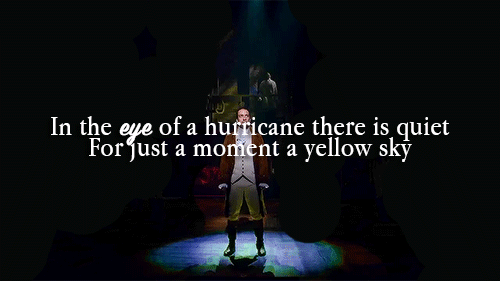[Please note: This article was written in 2018 during the height of a debate about Nordic Larp and American Larp. I hesitated at the time to get involved in the debate due to health issues, but now think I’d like to contribute this follow up to the question. Please read with the understanding the information is a little dated, and updates may occur.]
Nordic Larp. What does that even mean?
I had the same question myself when I headed over to Europe for the first time six years ago for Knutpunkt, the large Nordic Larp conference held once a year in either Norway, Sweden, Denmark, or Finland. I had the opportunity to drop myself into the middle of a larp discourse already in progress there, at the crossroads of many countries all discussing the different aspects of the art form/hobby of live action games. While there I learned that the Nordic larp tradition was spreading in a big way, fostered by outreach from the Nordic countries to other larp traditions across the world.
Since that outreach began, Nordic larp and its design ethos and ideology has become a part of many local larp communities, its influence offering tools to designers outside of their normal design choices. This exchange is, at its very heart, a fantastic way to grow larp as a discourse and a design practice and art form, inspiring new creations across the pond. But things haven’t been entirely… smooth in this cultural and design exchange. Not by a longshot.
For the last few years, a growing rift has begun between the centralized (as it is) Nordic larp community and the American community, driven by the way in which certain conversations have been going between the two groups and certain ideological differences. At the core of that discussion is a single idea: Nordic Larp and the ideas it espouses are rooted in a specific tradition, and to take that name and brand your larp that way outside of the community can be a problem.
More plainly: hey, people on the outside, Nordic Larp is not necessarily yours, and taking the name for your own buzz and hype is maybe not okay.
And you know what? For a number of reasons, that’s a really good point.
Your game probably isn’t Nordic Larp – and that’s okay too! Here’s why.
I opened this article with a question: what does the term Nordic Larp even mean?
There’s a lot of answers to that question. And if you think that makes the arguments about the appropriation of the term difficult, you’re absolutely right. Ask Larpers in the movement there what Nordic larp means, and you will probably get a lot of answers that seem hand-wavy and unspecific. However, there are certain key ideas behind Nordic Larp you can point to as being “very Nordic.”
This definition (which is a little long) comes from the NordicLarp.org, a website which focuses on collecting articles, videos, and documentation all about the evolving Nordic Larp tradition and discourse.
Nordic-style larp, or Nordic larp, is a term used to describe a school of larp game design that emerged in the Nordic countries. Nordic-style larp is dramatically different from larp in other parts of the world – here are a few examples of aims and ideals that are typical for this unique gaming scene:
Immersion. Nordic larpers want to feel like they are “really there”. This includes creating a truly convincing illusion of physically being in a medieval village/on a space ship/WWII bunker, playing a character that is very close to your own physical appearance, as well as focusing on getting under the character’s skin to “feel their feelings”. Dreaming in character at night is seen by some nordic larpers as a sign of an appropriate level of immersion.
Collaboration. Nordic-style larp is about creating an exciting and emotionally affecting story together, not measuring your strength. There is no winning, and many players intentionally let their characters fail in their objectives to create more interesting stories.
Artistic vision. Many Nordic games are intended as more than entertainment – they make artistic or even political statements. The goal in these games is to affect the players long term, to perhaps change the way they see themselves or how they act in society.
We’ll come back to some of the elements in this description in a moment, but keep in mind as we go forward the following descriptions: Nordic Larp is focused on Immersion, Collaboration, and Artistic Vision.
Alternatively, Jaakko Stenros, a well-known researcher, academic, and speaker gave a lecture at the Nordic Larp Talks in 2013 about just what is Nordic Larp, a talk that’s been shared the world over. I’d encourage everyone to give it a look before going any further (it’s not that long).
Stenros points out that early on in the Nordic larp scene, those within the community would label a larp Nordic when they thought it was a Nordic Larp – using the “I know it when I see it” method to build a body of work that helped define the later discourse. (And if you think that’s round-about, you’re not wrong). Yet within a few short years, the definitions of what is Nordic larp, while still widely debated, were solidifying to provide a larger context for those outside the culture and within.
During Stenros’ talk, he defines contributing elements to the definition of Nordic Larp. Some of them include:
- Larps coming from the Nordic countries (Sweden, Norway, Denmark, Finland)
- A social phenomenon and an ongoing discourse focused on playing styles and design ideals, rather than just geography, inspired and informed by other scenes originally such as Fastival, improv theater, and larps from other countries which helped build the basis of the Nordic tradition.
- Other elements to consider in this social phenomenon is the migration of influences, social situations that created the creation ground for the tradition, key works which influenced the discourse, social network structures within the key communities, and the people involved.
His stricter definition (influenced by the work done by Markus Montola and Bjarke Pedersen) is (at minute 10:19 in the video):
“A larp that is influenced by the Nordic Larp Tradition and contributes to the Nordic Larp discourse.”
Yup. A definition which is defined by itself. As my mother would say: Oy. Vey.
Please note that Stenros’ entire first ten minutes of the talk or so is about how his definition is not “the answer, but an answer” which he’s sure will be disagreed with, dissected, and transformed within a short period of time. What does that tell us? That Nordic larp was and still remains a shifting creature which is an all-encompassing term for a larger community, often defined less by what it is and more by where it comes from, what basic artistic principles created the initial cornerstone, and then set against the context of what it actually is not.
It’s also important to note that this definition, though I’m using it as the basis of a good deal of my discussion here, is also five years old. And as Jaakko notes, the tradition is ever-evolving. So by looking at the definition listed above from NordicLarp.org and then looking at Jaakko’s definition, the terms have evolved and narrowed down to identify specific design factors as key to the Nordic larp experience. There are also plenty of different introduction videos as well by thinkers and designers like Petter Karlson and others within the scene trying to define and identify what has become a slippery monster of a catch-all design ethos.
“[Nordic Larp is] a great term to describe a wide-cast net,” says Johannes Axner, editor-in-chief of NordicLarp.org and Swedish larper, “it’s pretty useless to describe individual larps.”
It’s that ambiguity, that wide net, which stands at the heart of this controversy. Nordic larp itself is a shifting mirage, defined by all those involved in the process over and over, grinding down the ambiguity to try and distill the essence. That essence is then interpreted, delineated, and slapped on games which run the gamut from block-buster big-ticket events to black box, small-scale experiences. And perhaps that defining and attributing is for more than just design reasons.
“Five years ago, no one cared what the exact definition [of Nordic larp] would be,” says Stenros. “This has changed. The term has now brand value. It is worth something.” This worth is at the heart of much of the argument going on within the larp communities, a brand value which, when attached to a game, evokes a certain response in players looking for that ‘Nordic Experience’ (capital N, capital E) they’ve heard so much about. The brand value, when added to the advertisement for a larp, interests those who have heard about games like College of Wizardry and Just A Little Lovin’ in Europe, who’ve seen documentation about games on battleships and in castles and yearn for something bigger than perhaps what they’re used to.
Similarly, organizers have deployed the branding of “Nordic Larp” or “Nordic Inspired” to evoke the specific school of design Stenros has described in his talk – and perhaps rightly so. These games can be said to have been heavily influenced by the Nordic larp design elements learned by engaging in spaces like Knutpunkt or online groups, or even by those who have hopped the Atlantic to play the Nordic larps themselves.
“If you brand something Nordic Larp, you might get cool indie cred in the US, or you might get some players who wouldn’t have considered going to your game.” Is that really what we’re doing when using the term in the United States? Relying on the branding of Nordic larp to bring in players who might be looking for that indie cred, or else looking for a new hotness they’ve only heard of and not seen elsewhere? I think (in part) the answer is yes. Stenros may have been writing about this in 2013 but in the years that followed, we’ve seen an uptick in games in the US using the term, and those games have been very high profile and considered en vogue right now. And that attracts attendees.
And that isn’t bad. In fact, for larp designers bringing in players from across traditions, having the brand recognition of Nordic Larp can spread a new tradition of ideas to audiences which might never have had access to it before. This especially works for those American larpers who can’t hop the pond or spend the money to attend Knutpunkt, whose finances don’t allow European trips, or whose mental bandwidth doesn’t allow them to engage with ongoing (and often complex and heated) debates in online spaces. Nordic larps or “Nordic inspired” games coming to the US allows people to see just what the (rightly created) fuss is all about.
However, in deploying that brand name, not only are organizers evoking an entire larp culture’s identity, but sometimes imposing their own outsider’s opinion on what exactly makes that culture tick.
It’s coming into someone’s home and asking for a recipe, then going home to make the thing and say their food is the same as the authentic cultural cuisine. That’s been happening for generations, as Americans recreate food (which is a cultural medium by the way) and define what it is and how it should be prepared based on their own internal design/creative choices. Or else they create food fusions, taking traditions and smashing them together to make new and interesting takes on traditional recipes.
And that’s what’s happening here. “Nordic-inspired” games are the fusion food of the larp world, considered pretty trendy, attention-grabbing and fun. Fusion is sexy, it’s mysterious: what can this combination create, bringing together the best of both worlds for something we’ve never seen before. And you know what? Fusion is AWESOME. Fusion dishes are exciting and innovative and create new and fabulous tastes based on cultural exchange. Fusion is a valid and impressive form of food evolution.
Where it can become a problem is where people misidentify or else co-opt food origins altogether for their own ends without giving credence to where it came from, or considering just how they may be erasing traditions from BOTH cultures to create this newly created dish… game…
This analogy has gotten away from me here. But I digress. Let’s look at some of the factors involved in this erasure.
We’ve looked a lot at the Nordic larp tradition across the pond and how it developed, but looking at the other side of this potential appropriation debate, we must also look at the development of larp cultures across the United States. Plenty of research has gone into the myriad traditions and groups which have deep cultural roots across the US, work done by academic powerhouses like Jonaya Kemper and journalists like Lizzie Stark. The United States has decades-long histories going back to the days of the evolution of simulationist gaming into live action spaces, and non-nerd community organizations like Model UN or murder mystery weekends.
These traditions are vast and wide-spread and often developed in tandem with one another over the years. Due to geographic isolation, lack of communication between groups, and schisms splitting communities over the years, different larp traditions have evolved to create design tools that can be both similar to those from other communities and also flavored with their own experiences and innovations. And due to how massive the United States are, that decades-long artistic growth from untold separate communities has created a tapestry of American larp culture which reflects the diversity which makes America what it is today: a complicated, culturally diverse, and often fraught hotbed of inter-community cooperation and friction.
It’s because of that complexity that United States larp doesn’t have a centralized definition, even though many from the outside have struggled and often erroneously attributed one to the scene (if there can be said to be a single scene). “American Larp” is often defined as “a form of roleplaying game where participants physically portray their characters” (Wikipedia) while engaging in competitive play, sometimes involving heavily controlled plotlines, live combat with contact safe (boffer) weapons, and “crunchy”, number-based systems which rely heavily on chance and competition rather than negotiation. American larp is also sometimes split in definition in an attempt to encompass those many traditions by putting them into several sub-categories: live combat (boffer) games, theater style games with no physical contact (like the far-reaching Camarilla Club or Mind’s Eye Society for White Wolf games), and the emerging and ever-growing freeform scene, with smaller and more personal games and less scenography or 360-degree immersion involved.
As you can imagine, these definitions are almost just as broad as the term Nordic Larp, even in their broken down form, and contribute to a generalization of what “American Larp” really is that does no one any favors. One could then instead go in and deconstruct just what design practices are employed by these American traditions, and you do come down (in my opinion) to some important cultural touch points which are pervasive in many designs, specifically:
- a reliance on chance rather than negotiation,
- a competitive spirit between players and therefore their characters,
- a focus on secrets kept by characters rather than open sharing of plots beforehand or during play, and
- stories heavily driven by centralized storyteller authority rather than created cooperatively and predominantly by players.
Yet even with these pinpointed overlaps in communities, these elements barely touch the complexities developed in US larps over the years. And many of the games being created defy these elements, operating outside of the definition traditionally ascribed to much of the American larp scene. These games instead incorporate perhaps some of these element – or none at all – and instead employ design choices we might more closely attribute to Nordic Larp games. This includes design ideological choices like cooperative narrative development, culturally important thematics, emotional roleplay focus over story and simulation, and strip-down of mechanics to more freeform design.
In that way, these games have more in common perhaps with Nordic design than with their American counterparts. But that does not make them any less a product of the American larp system. And to say these tools haven’t been employed by American larpers for years now is to erase literally generations of work by talented designers and powerful communities in favor of claiming techniques to a single community. Everyone in larp has been reinventing the wheel for years, but in the end a lot of our wheels ended up looking very much the same, and all doing the same job: rolling the hell along.
But then we come back to branding. And though a game might be incorporating elements which are recognized now during international discourse as “so Nordic,” the use of the term serves to attract players while largely undermining the complexity of the larp development in the United States and the world over. It appropriates the ever-evolving and often ephemeral Nordic Larp label for the sake of defining a game against the ‘American larp scene’ while still employing some of the techniques shared by both communities. And usually for the sake of creating distinction between what has come before, and the new hotness now.
In fact, many of the games being created are not Nordic Larps. They’re games which share design elements with Nordic Larps, elements which have been in use in the United States larp scene forever. And so the distinction belittles American larp while taking the brand of another community for our own. Essentially, it’s causing erasure on BOTH sides and causing further friction between American and Nordic larp communities.
Nordic Larpers express frustration about their culture being taken for profit here.
American Larpers feel under-appreciated, their traditions slighted and ignored in favor of the European import.
And so the fight has simmered, and recently exploded, and here we are.
But we’re missing a fundamental answer to this discussion altogether: games in the United States don’t need to be Nordic Larps to have the same elements. We’ve had those elements all along! We just didn’t have a brand, a label, and certainly not one with as much recognition as the hip Nordic Larp brand. (And I’m sorry for those who bristle under the use of such a capitalistic terminology for an art movement, but it is a brand today, used to sell experiences. And that class/political/economic issue is an internal debate for the Nordic community which has complicated the problem of tensions even further.)
American larpers don’t need to label their games as Nordic for them to be cool, and immersive, and emotionally intense, and freeform. We’ve had those for the longest time. In communities, for example, like Intercon and the Double Exposure communities, larps like these have been evolving for years now. Across the country, we’ve had people discovering these changes on their own. But because we’re not united in a single art scene, we needed a lable. And I believe for that reason, and for branding power, Nordic Larp was borrowed, the tradition imported, the ideology embraced.
Unless these games are run by Nordic teams in the US, even working with American larp designers (such as the teams running Just A Little Lovin’ in the US in 2017 or the newly merged Turtle House, made up of US company Imagine Nation and Dziobak Studios from Denmark), these games remain strongly American.
And I repeat. That’s okay. We can have our own hotness too.
In fact, I believe it is VITAL to the health of American larp and our pride as a larp culture that we embrace having our own hotness. That we work together in the spirit of growing national community connections to create discussions of commonality, and even perhaps create a term for our own adaptations of what traditions people are calling Nordic. “Nordic Inspired” doesn’t really hack it anymore and evokes that erasure again.
We’ve got our own thing going here. Why not find a name that serves to both give credit to the American developing scene and also detach ourselves from the appropriation of Nordic Larp? We don’t need to borrow anything when we’ve got our own sexy fusion going on, ready to evolve our larp communities to a bigger and better tomorrow.
On the opposite side of this argument is perhaps a valid point brought up by Jaakko Stenros within his above video, a point which sits strong in my mind when I feel a sense of irritation at the idea that Nordic Larp has been appropriated. As Stenros says:
“No one owns Nordic larp,” says Stenros in the introduction to his definition. “Not the designers, not the larpwrites, not the organizers. Not the journalists, not the experts, not the academics not the researchers, not the event organizers, or popularizers. Not the web service providers or the editors in chief, not the people who are working to import larp or export larp, not even the players.
“For we all own Nordic larp. There simply is no central bureau of Nordic Larp. And if there was, I can promise you that splinter groups would surface faster than you can say “Fucking fascists trying to limit my imagination to copyright my reality hacking tools, to steal my status and funding, and to take away my fun and misery.”
Nordic Larp in itself not only evolved, as mentioned above, by its creators and trend setters attending other larp traditions and creative communities to borrow techniques, but the community is defined by an ideology which does not belong to any individual group. It in and of itself is built around dozens of smaller communities, each networked together to define their games based on a shifting rubric. So then how can the Nordic Larp community claim ownership of this brand – simply because it’s Nordic? If the idea was to share ideas and continue to evolve Nordic Larp as a tradition, as it has continued to do over the years, then why invite outside input from (for example) Americans only to become upset when that input is given and swapped back to the US. Sharing ideas doesn’t necessarily happen the way one wants, nor produce some sanitized results. Cultural exchange is messy, and getting your peanut butter in your hummus can make some weird results that change the context of both ingredients for mixed results.
If you can’t own Nordic Larp, then is it fair to say you own or control the overall discourse? Especially when that discourse invited in the very voices now being criticized for appropriation? Is it appropriation or a cultural sharing, a blending? Or is it a one-way theft of ideas? That is at its heart the essence of a lot of discussions of what is appropriation in the first place in all media and art forms, and is now being reflected in the larp world, underpinned by a current of fear about American cultural colonization which has existed the world over since America rose to super-power and international media influencer status.
But is that what this is? Is this appropriation or exchange? The debate goes on.
While we fight about the issue, however, are there any solutions to positively influence this contentious debate?
I believe there are three major solutions.
- We as American larpers have a vested interest in discovering a new definition for what is coming out of the new evolution of larp right now, influenced as it is heavily by these ideas which appear parallel to Nordic Larp design. Nordic-inspired doesn’t cut it and does little for either us American Larpers or the Nordic community. Whatever we come up with, I’m sure we’ll fight about constantly. But having a brand new hotness all our own to reflect the hard work and in-house evolution we’ve done here in America would let us define ourselves a little more based on American ethos and make us look a little less like we’re blatantly ripping off another culture (which in fact we are not).
- American and Nordic larp communities must have conversations, both internally and between one another, about the manner by which people are sharing information, and whether or not it feels appropriative or acting as an exchange. A two-way street is an important start to making the cultural discourse feel mutual rather than either appropriative or elitist, depending on the interpretation of the side of the argument. Americans aren’t coming over to steal ideas and just be prescriptive about their ideas, and Nordic larpers aren’t demeaning all American larp as lesser and imposing their European ways on American larp communities. And if it feels that way, we should talk about why and try to mend those fences, for the sake of larp development and community relations.
- Last but not least (and perhaps harder still) is a revisiting of the way conversations about these issues are happening. Individuals are not only becoming burnt out, but there is very little benefit of the doubt happening. Instead, battle lines are becoming highly contentious, leading to many great designers and thinkers checking out of the conversation and perhaps even communities. We are imploding in on ourselves in an effort to preserve what we feel is vital to our identities, and a lot of that is based on the tensions rising and no assumption of positive intent. I believe that positive intent exists, and where it does not, it needs to be fostered to explore our commonalities and embrace our growing future as an international community. The alternative is cultural schism once more, something which has plagued larp communities everywhere forever.
I believe we are on the cusp of a very important turning point in international larp discourse, where the decisions we make now will cement either a continually evolving design exchange which could improve everyone’s games and communities. Or else we’re going to continue fracturing under the weight of our factionalism and concerns about appropriation and political/ideological entrenchment. And if that happens, what we will lose is the chance at a brilliant future of creation together that could be wonderful, if allowed to flourish and survive.
The decision on how to proceed is largely in our hands. We just have to communicate and do the (often) hard work to get us all there together.

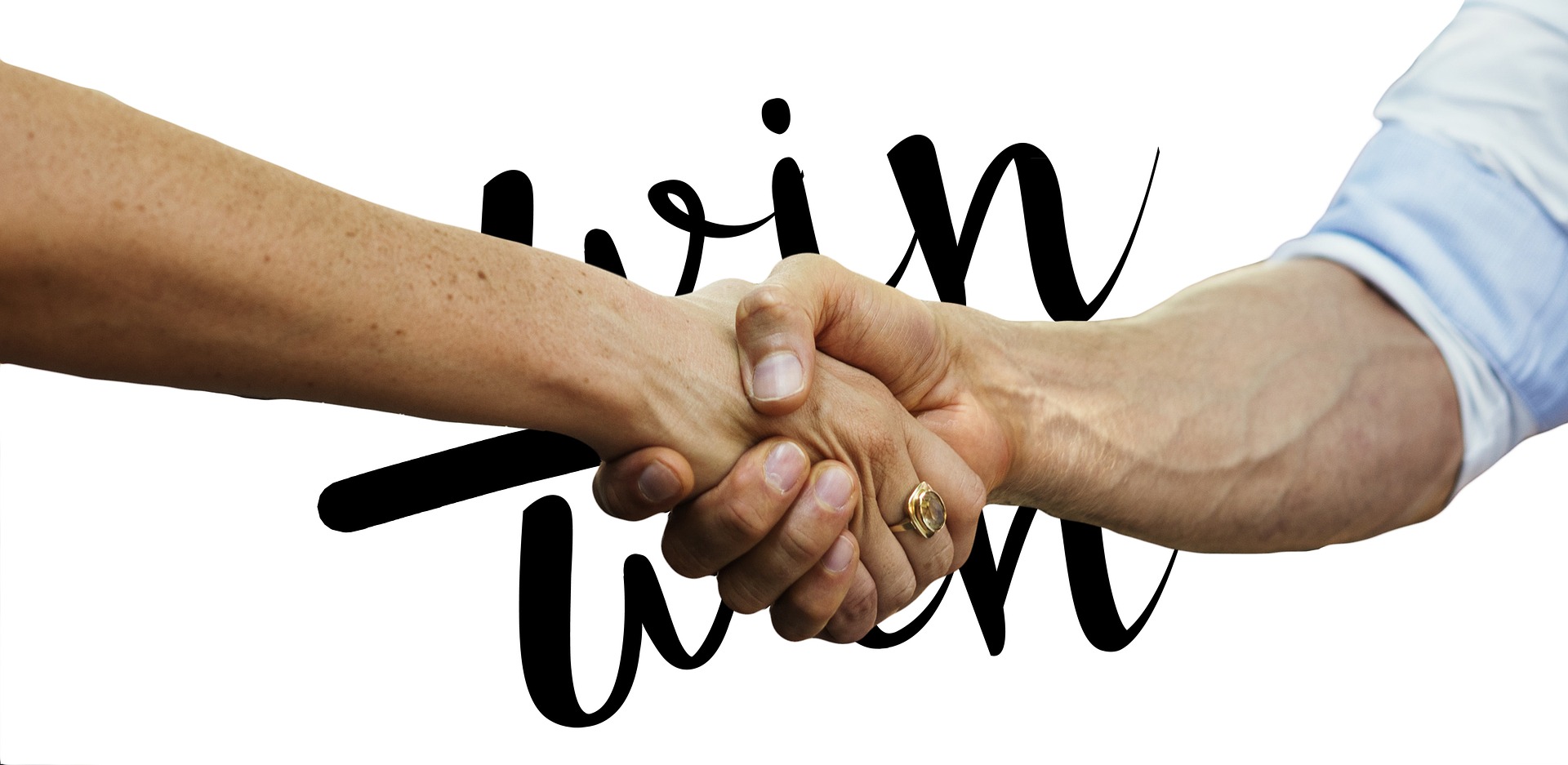
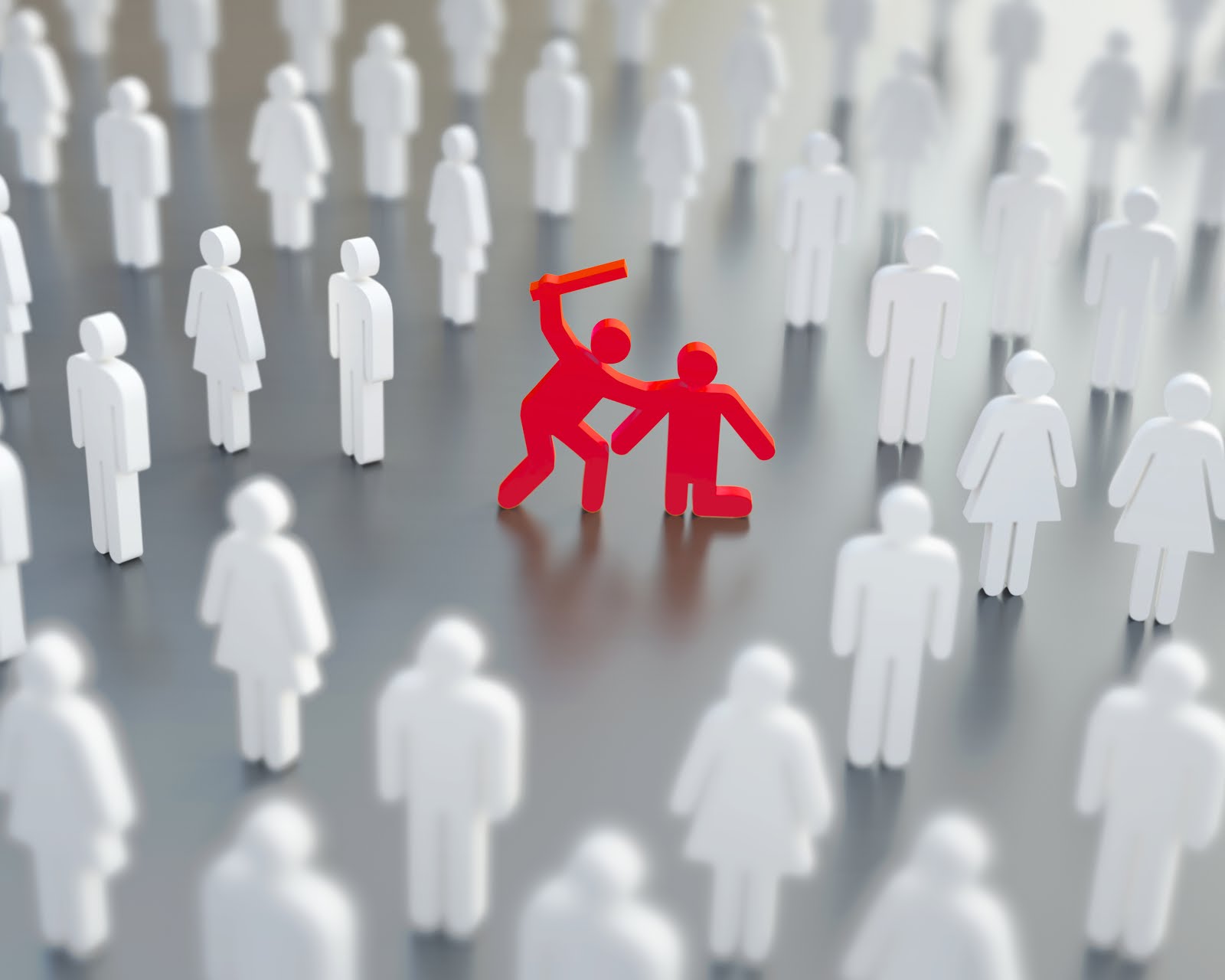
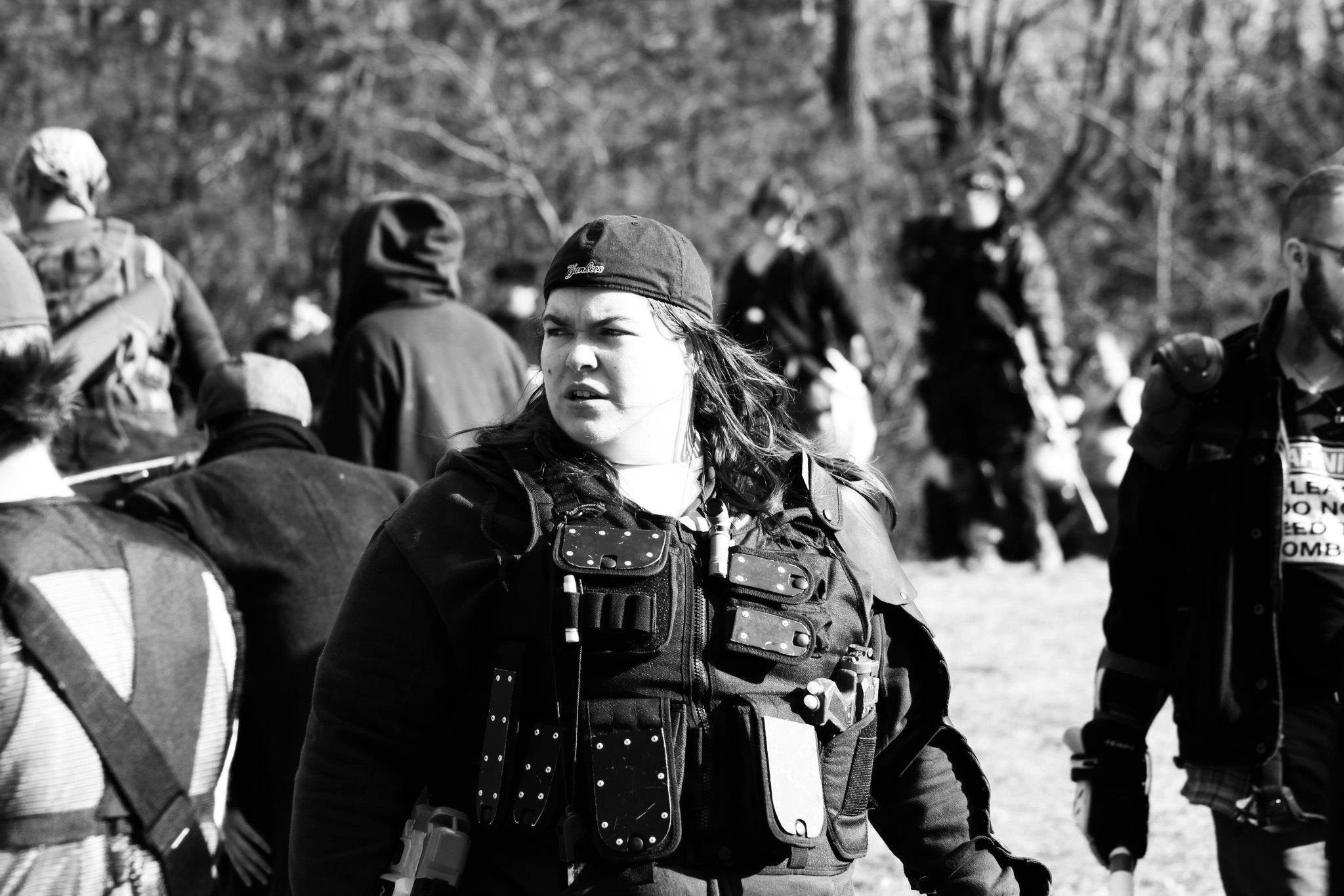

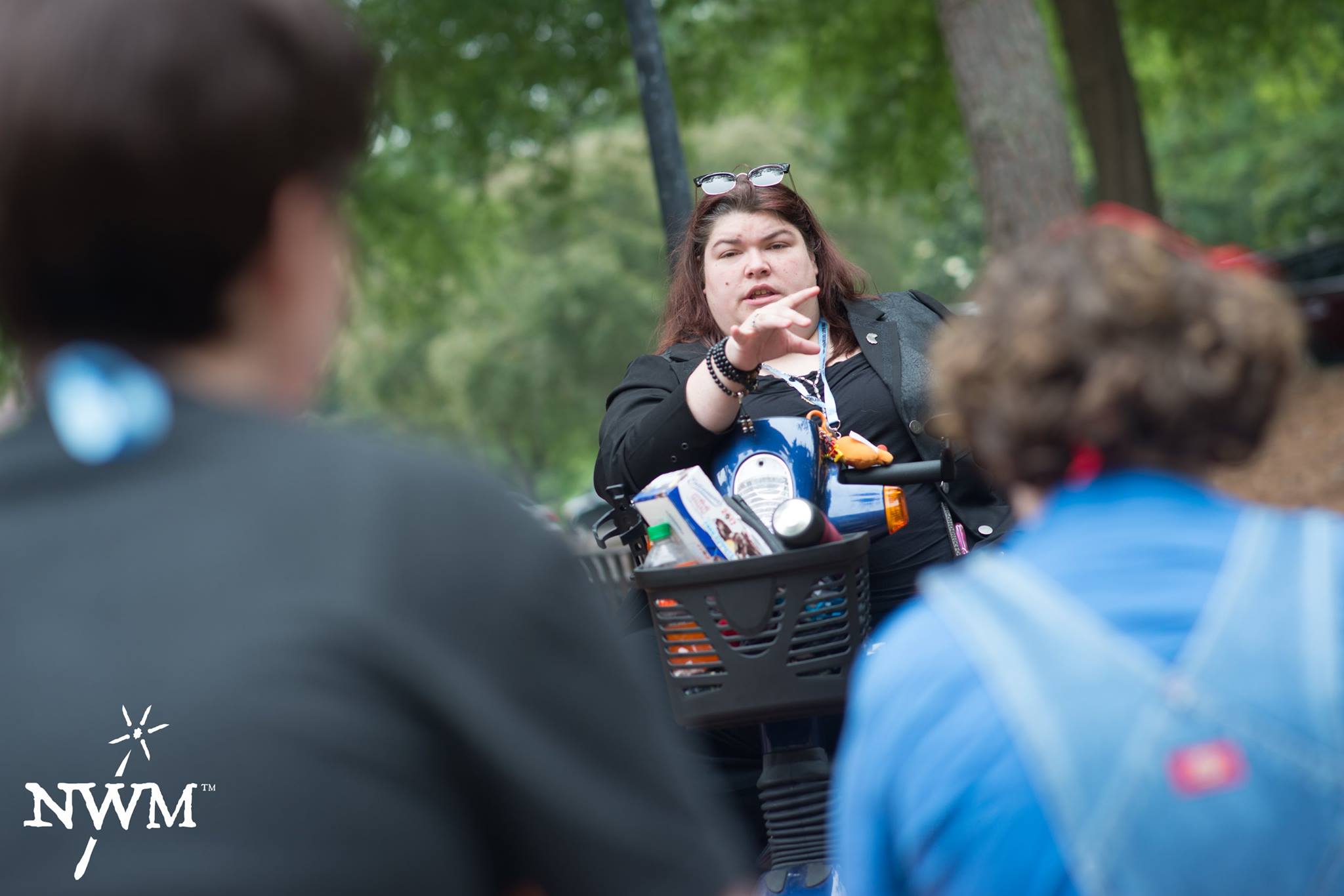
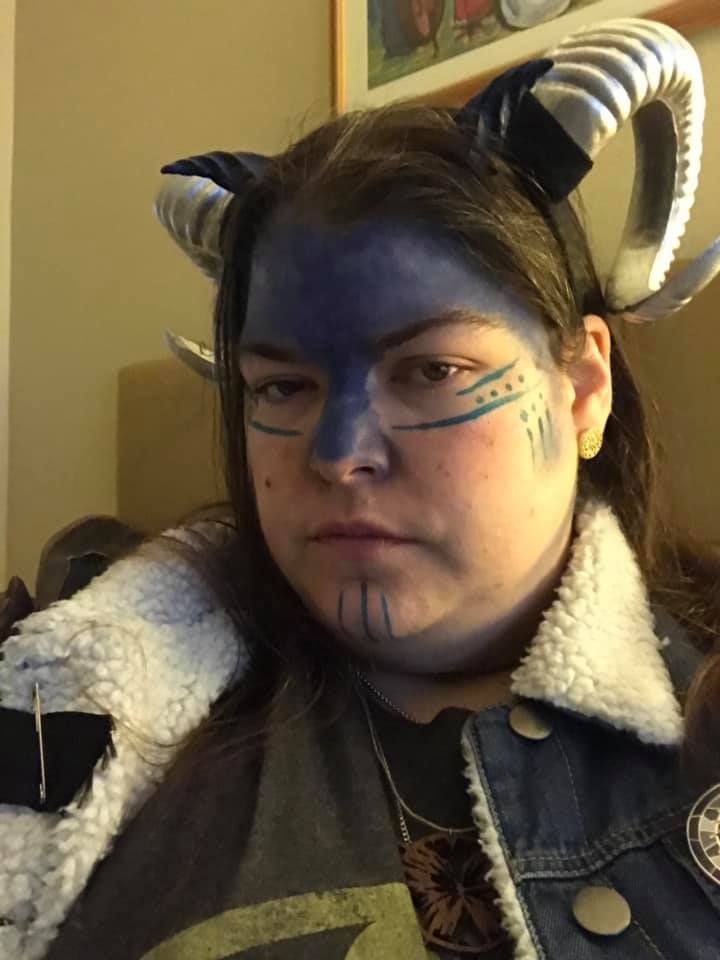
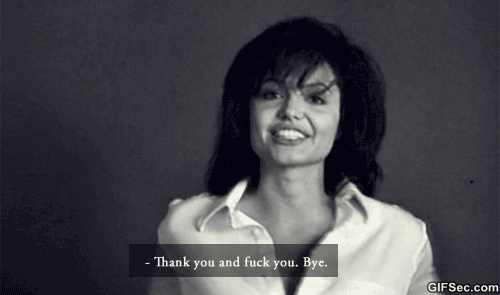
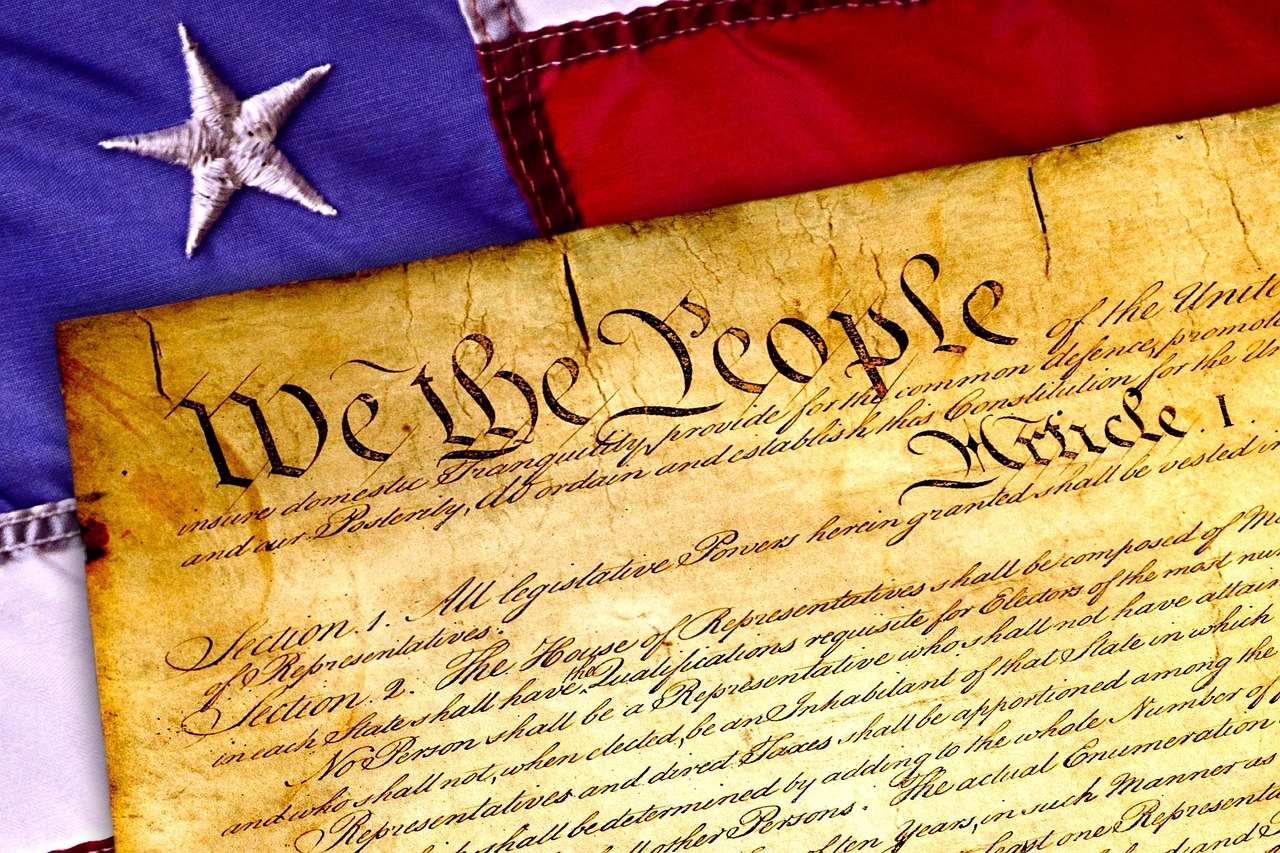


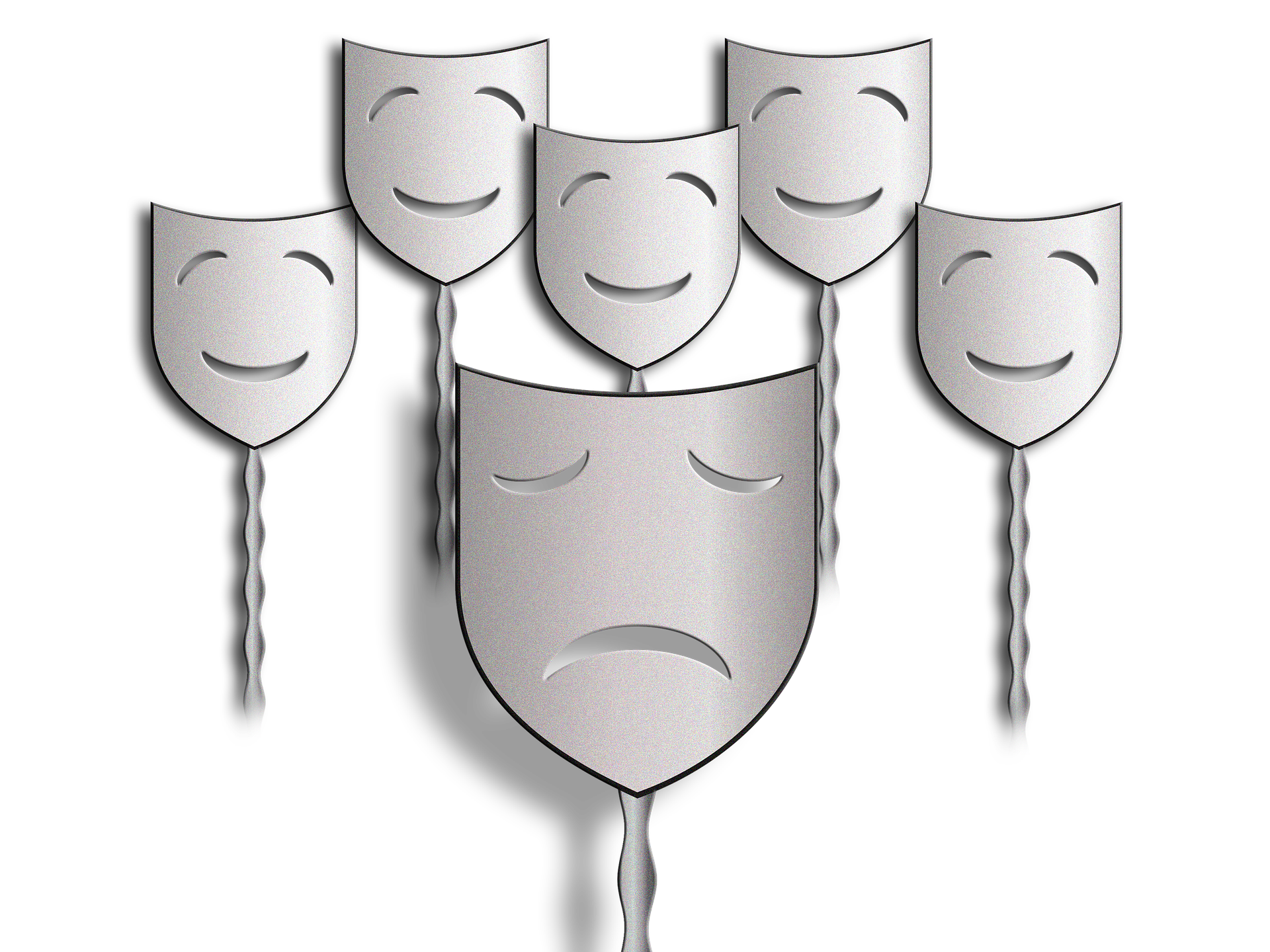







 I wondered what the facilitators’ intentions were and what they were feeling. At the end of the day, they’d go home after the game to their lives, having completed their task of guiding their players towards game’s completion. And I would go home with my feelings, still convoluted and complex and ready for unpacking in a positive form of my own choosing. I’d go home to my Monday morning after game and all the responsibilities therein. Only I’d be adding all the tangled emotions a mandatory debrief added, feelings of forced vulnerability and emotional flaying, being put on the spot and feeling shame and distrust and imposition. Feeling as though my emotions were not respected.
I wondered what the facilitators’ intentions were and what they were feeling. At the end of the day, they’d go home after the game to their lives, having completed their task of guiding their players towards game’s completion. And I would go home with my feelings, still convoluted and complex and ready for unpacking in a positive form of my own choosing. I’d go home to my Monday morning after game and all the responsibilities therein. Only I’d be adding all the tangled emotions a mandatory debrief added, feelings of forced vulnerability and emotional flaying, being put on the spot and feeling shame and distrust and imposition. Feeling as though my emotions were not respected. I made it through the end of game, but I was out of sorts, jumpy. When game was over, there was no debrief. I left with my friends and went to a diner, where the player of the character in question sat a few tables away with his friends. It took all my courage to get up and head for the table. I joined his conversation and jokingly asked what he thought about what had happened. He responded by defending his character’s actions, saying my character “deserved it.” My hands kept shaking. I tried to joke about it too, then tried to say how screwed up the whole thing was. I tried to talk about it with him. And he blew me off with jokes, unwilling to let me tell him what I needed to say. I walked away from the table and within two weeks wanted to quit the ongoing game.
I made it through the end of game, but I was out of sorts, jumpy. When game was over, there was no debrief. I left with my friends and went to a diner, where the player of the character in question sat a few tables away with his friends. It took all my courage to get up and head for the table. I joined his conversation and jokingly asked what he thought about what had happened. He responded by defending his character’s actions, saying my character “deserved it.” My hands kept shaking. I tried to joke about it too, then tried to say how screwed up the whole thing was. I tried to talk about it with him. And he blew me off with jokes, unwilling to let me tell him what I needed to say. I walked away from the table and within two weeks wanted to quit the ongoing game. At that moment, I needed a debrief. I needed someplace to take those emotions and unpack them, to uncork the bottle and get those feelings out before they started to fester. But for three months, because of a lack of debriefing, those feelings did fester and nearly ruined the whole game for me. Every time the player in question came near in the subsequent games, my hands started to shake. It took him cornering me again in the game for me to realize I needed to get through the feelings once and for all. A friend of mine had to drive the player away from me as I had an anxiety attack. I was not okay. And I didn’t feel I had an emotional outlet or recourse to help deal with the way I felt.
At that moment, I needed a debrief. I needed someplace to take those emotions and unpack them, to uncork the bottle and get those feelings out before they started to fester. But for three months, because of a lack of debriefing, those feelings did fester and nearly ruined the whole game for me. Every time the player in question came near in the subsequent games, my hands started to shake. It took him cornering me again in the game for me to realize I needed to get through the feelings once and for all. A friend of mine had to drive the player away from me as I had an anxiety attack. I was not okay. And I didn’t feel I had an emotional outlet or recourse to help deal with the way I felt.

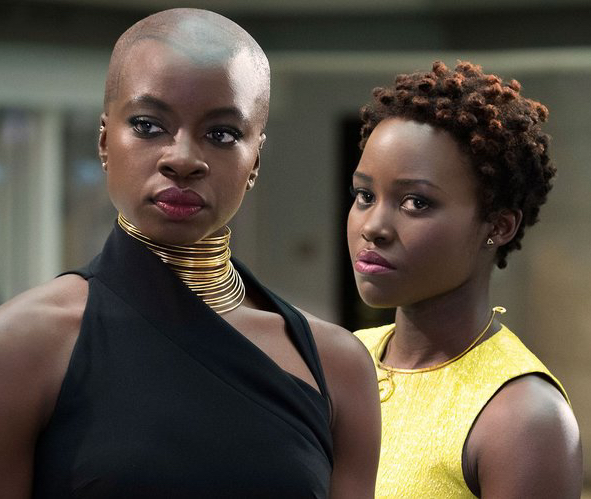
 Feminism As An Integrated Force
Feminism As An Integrated Force By contrast, we have Wakanda. Though Wakanda is an isolationist society much like Themyscira in regards to the rest of the world (a subject for much debate elsewhere and addressed directly in the Black Panther film), it is also a well-balanced, nearly utopian society, growing technologically and societally with every passing generation while still holding onto its ancient traditions. Yet unlike other societies, Wakanda does not focus on patriarchal ideology, despite its male-dominated leadership (Wakanda has a history of only kings on the throne until, spoiler alert, Shuri becomes the first woman leader in the comics). Instead, Wakanda has fully integrated the idea of women as equals, creating a society where women are not only respected but accepted without surprise when in positions of power.
By contrast, we have Wakanda. Though Wakanda is an isolationist society much like Themyscira in regards to the rest of the world (a subject for much debate elsewhere and addressed directly in the Black Panther film), it is also a well-balanced, nearly utopian society, growing technologically and societally with every passing generation while still holding onto its ancient traditions. Yet unlike other societies, Wakanda does not focus on patriarchal ideology, despite its male-dominated leadership (Wakanda has a history of only kings on the throne until, spoiler alert, Shuri becomes the first woman leader in the comics). Instead, Wakanda has fully integrated the idea of women as equals, creating a society where women are not only respected but accepted without surprise when in positions of power. There are powerful examples of this integration all across the film. Shuri is the princess of Wakanda and yet, as a super genius serves as the driving force behind Wakanda’s technological evolution. Okoye is the leader of the Dora Milaje, a fighting force of women drawn from every tribe of Wakanda to be its most dangerous protectors. As the bodyguards of the royal family, the Dora Milaje are never questioned as warriors but instead accepted not only as equals but as superiors in combat. Even King T’Challa knows he is meant to be deferential in many ways to Okoye, who has more experience as a warrior and general than he does. Let me say that a little louder: never once does the king of the sovereign, advanced nation of Wakanda speak down to or diminish the power of the women warriors and creators all around him. He humbly recognizes women as equals, worthy of respect as a matter of commonplace course.
There are powerful examples of this integration all across the film. Shuri is the princess of Wakanda and yet, as a super genius serves as the driving force behind Wakanda’s technological evolution. Okoye is the leader of the Dora Milaje, a fighting force of women drawn from every tribe of Wakanda to be its most dangerous protectors. As the bodyguards of the royal family, the Dora Milaje are never questioned as warriors but instead accepted not only as equals but as superiors in combat. Even King T’Challa knows he is meant to be deferential in many ways to Okoye, who has more experience as a warrior and general than he does. Let me say that a little louder: never once does the king of the sovereign, advanced nation of Wakanda speak down to or diminish the power of the women warriors and creators all around him. He humbly recognizes women as equals, worthy of respect as a matter of commonplace course. Never is T’Challa’s acceptance of the influence of women more apparent than in his relationship with his ultimate spy, Nakia. Nakia left Wakanda to embed herself in other societies for the purpose of saving people (especially women) endangered in the turbulent outside world, flying directly in the face of Wakandan tradition and T’Challa’s own interests. T’Challa sought out Nakia as a love interest and yet respected her choice to leave, even when he disagreed. When he finds her once again at the beginning of the film, he is struck nearly dumb at the sight of her, a king lost for a moment in the sight of the woman he obviously still cares about, much to Okoye’s snarky delight. Yet with every interaction between Nakia and T’Challa, we see a man not only besotted with the spymistress, but a man who does not treat her as a sexual or romantic object. Instead, he values her experience, her opinion, and her power, accepting her choices without real complaint and listening to her advice so much she influences his entire foreign policy.
Never is T’Challa’s acceptance of the influence of women more apparent than in his relationship with his ultimate spy, Nakia. Nakia left Wakanda to embed herself in other societies for the purpose of saving people (especially women) endangered in the turbulent outside world, flying directly in the face of Wakandan tradition and T’Challa’s own interests. T’Challa sought out Nakia as a love interest and yet respected her choice to leave, even when he disagreed. When he finds her once again at the beginning of the film, he is struck nearly dumb at the sight of her, a king lost for a moment in the sight of the woman he obviously still cares about, much to Okoye’s snarky delight. Yet with every interaction between Nakia and T’Challa, we see a man not only besotted with the spymistress, but a man who does not treat her as a sexual or romantic object. Instead, he values her experience, her opinion, and her power, accepting her choices without real complaint and listening to her advice so much she influences his entire foreign policy.
 Diana enters the world outside an innocent, ready to bring her ideas to someone else’s culture without any idea of their real history, their issues, or the ingrained ideas she’ll be facing. She believes she can change men’s minds just by bringing them a better way from the outside of their society, from a clearly “superior” place. In a strange way, she is a cultural tourist, if a well-meaning one, presenting her feminism into a world which is in many ways unprepared for a radical cultural shift and unwilling to change so quickly just because they’re told about “superior” feminist ideology from an outsider. It’s for that reason Diana struggles so hard to influence “man’s world” – she is not a part of it, but an alien influence presenting a new form of thinking to a world with thousands of years of ingrained thinking to undo.
Diana enters the world outside an innocent, ready to bring her ideas to someone else’s culture without any idea of their real history, their issues, or the ingrained ideas she’ll be facing. She believes she can change men’s minds just by bringing them a better way from the outside of their society, from a clearly “superior” place. In a strange way, she is a cultural tourist, if a well-meaning one, presenting her feminism into a world which is in many ways unprepared for a radical cultural shift and unwilling to change so quickly just because they’re told about “superior” feminist ideology from an outsider. It’s for that reason Diana struggles so hard to influence “man’s world” – she is not a part of it, but an alien influence presenting a new form of thinking to a world with thousands of years of ingrained thinking to undo. It’s no wonder then that the men around Diana remain, in large part, still entrenched in their toxic masculine ideas. Though Wonder Woman earns the respect of many of her male colleagues both in the comics and in the recent film, her ideas are still considered foreign to most men around her. In fact, most do not divest themselves of their ideology to embrace a way of living outside the influence of toxic masculinity. They instead bend to Diana’s ideas only when they are the most needed, flexing back to their ingrained patriarchal thinking often right after she’s not around. Steve Trevor is an example, as in the film he spends the entire time attempting to influence Diana to his way of thinking instead of the other way around, using his patriarchal thinking to drag her halfway across Europe and blocking her action with what is clearly his male privilege. A male privilege which is obviously lacking in Wakanda.
It’s no wonder then that the men around Diana remain, in large part, still entrenched in their toxic masculine ideas. Though Wonder Woman earns the respect of many of her male colleagues both in the comics and in the recent film, her ideas are still considered foreign to most men around her. In fact, most do not divest themselves of their ideology to embrace a way of living outside the influence of toxic masculinity. They instead bend to Diana’s ideas only when they are the most needed, flexing back to their ingrained patriarchal thinking often right after she’s not around. Steve Trevor is an example, as in the film he spends the entire time attempting to influence Diana to his way of thinking instead of the other way around, using his patriarchal thinking to drag her halfway across Europe and blocking her action with what is clearly his male privilege. A male privilege which is obviously lacking in Wakanda. T’Challa also has powerful emotional connections to the men around him, including Zuri the priest and especially his father, the late King T’Chaka. When he is put into the trance during his test to assume the throne, he speaks to his father and falls crying against his side, showing a level of emotion often considered anathema to a male protagonist. He doesn’t brood but instead shows his inner conflicts over his right to be king with quiet consideration and a willingness to take criticism and advice without anger or retaliation. He, to be plain, showcases all the hallmarks of a male protagonist stripped of the signposts of toxic masculinity influence, as do the other male characters in Wakanda.
T’Challa also has powerful emotional connections to the men around him, including Zuri the priest and especially his father, the late King T’Chaka. When he is put into the trance during his test to assume the throne, he speaks to his father and falls crying against his side, showing a level of emotion often considered anathema to a male protagonist. He doesn’t brood but instead shows his inner conflicts over his right to be king with quiet consideration and a willingness to take criticism and advice without anger or retaliation. He, to be plain, showcases all the hallmarks of a male protagonist stripped of the signposts of toxic masculinity influence, as do the other male characters in Wakanda.
 Killmonger shows all the brash hallmarks of a man trapping his pain away in rage, using violence to solve his problems rather than embracing his emotions to give way to catharsis and resolution. His disconnection to women is also apparent in the film, as he is followed by a woman of color who barely has any speaking lines or so much as a name (I had to look it up, it’s Linda). In every scene, this woman is treated as the token girlfriend/henchwoman, and then killed by Killmonger when Ulysses Klaw uses her as a hostage. She is the ultimate expression of Killmonger’s embroilment in the toxic masculine culture. Even Killmonger’s influence on others brings patriarchal influence and damage to Wakandan culture, as he twists Okoye’s beloved W’Kabi away from his loyalty to T’Challa and turns his entire tribe against the throne with promises of revenge and violence.
Killmonger shows all the brash hallmarks of a man trapping his pain away in rage, using violence to solve his problems rather than embracing his emotions to give way to catharsis and resolution. His disconnection to women is also apparent in the film, as he is followed by a woman of color who barely has any speaking lines or so much as a name (I had to look it up, it’s Linda). In every scene, this woman is treated as the token girlfriend/henchwoman, and then killed by Killmonger when Ulysses Klaw uses her as a hostage. She is the ultimate expression of Killmonger’s embroilment in the toxic masculine culture. Even Killmonger’s influence on others brings patriarchal influence and damage to Wakandan culture, as he twists Okoye’s beloved W’Kabi away from his loyalty to T’Challa and turns his entire tribe against the throne with promises of revenge and violence. Yet even in Killmonger’s scenes, we see a spark of that Wakandan emotional connection, when he goes into the trance and speaks once more to his father. Killmonger’s father clearly expresses the same emotional complexity and sensitivity showcased by other Wakandan men when he tries to connect to his son, but despairs at the rage and closed off pain he sees in the man his son has become. It’s only through T’Challa’s attempts to reconcile with Killmonger that we see a little of the emotional sensitivity of Wakanda rubbing off on the furious villain. But still, the outside world has trapped Killmonger so badly into the patriarchal cycle that, even in his end when T’Challa offers him peace and solace in his final moments, he is unable to be anything but angry in his own sorrow.
Yet even in Killmonger’s scenes, we see a spark of that Wakandan emotional connection, when he goes into the trance and speaks once more to his father. Killmonger’s father clearly expresses the same emotional complexity and sensitivity showcased by other Wakandan men when he tries to connect to his son, but despairs at the rage and closed off pain he sees in the man his son has become. It’s only through T’Challa’s attempts to reconcile with Killmonger that we see a little of the emotional sensitivity of Wakanda rubbing off on the furious villain. But still, the outside world has trapped Killmonger so badly into the patriarchal cycle that, even in his end when T’Challa offers him peace and solace in his final moments, he is unable to be anything but angry in his own sorrow. As stated above, Wonder Woman is the exceptional woman in a world of men, the ambassador and outsider who shirks her own society’s xenophobic tendencies to save the outside world from itself. She is the one in a thousand, one in a million, the beautiful and infinitely powerful immortal goddess on earth who brings her special brand of love and ass-kicking to both the battlefield and her personal relationships. When you read her comics and watch the film, the narrative makes one thing clear: there is no one truly like Diana, and she is the ultimate of her kind. And when we look at her sister Amazons, they all are expressed with similar, if less powerful, expressions of the same archetype of idealized feminism and utopian female ideology. Together, they are an often uniform face of the Exceptional Feminist, set apart and ready to impress with their evolved ideas.
As stated above, Wonder Woman is the exceptional woman in a world of men, the ambassador and outsider who shirks her own society’s xenophobic tendencies to save the outside world from itself. She is the one in a thousand, one in a million, the beautiful and infinitely powerful immortal goddess on earth who brings her special brand of love and ass-kicking to both the battlefield and her personal relationships. When you read her comics and watch the film, the narrative makes one thing clear: there is no one truly like Diana, and she is the ultimate of her kind. And when we look at her sister Amazons, they all are expressed with similar, if less powerful, expressions of the same archetype of idealized feminism and utopian female ideology. Together, they are an often uniform face of the Exceptional Feminist, set apart and ready to impress with their evolved ideas. By contrast, the powerful women of Wakanda are not only exceptional in their power but nuanced in their presentation in the narrative. Their equality and power are not packed into a single package of ass-kicking and peace and love, but instead, each woman is her own nuanced expression of a fully realized woman.
By contrast, the powerful women of Wakanda are not only exceptional in their power but nuanced in their presentation in the narrative. Their equality and power are not packed into a single package of ass-kicking and peace and love, but instead, each woman is her own nuanced expression of a fully realized woman.

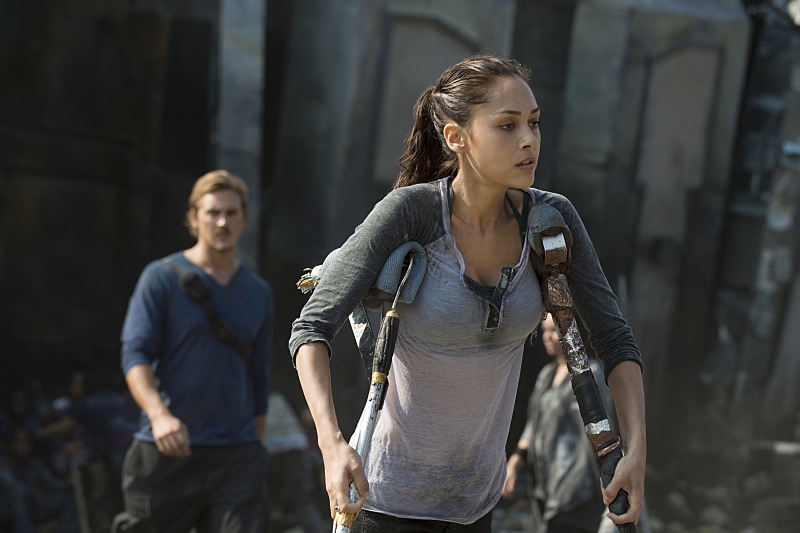
 This personal look into how reliant I am on society to stay alive has been an eye-opener for me. In a world were destabilization is so much closer than we ever thought possible, I look for solace to literature to relax, and realize how many of the narratives I enjoyed before leave a bitter taste in my mouth. I reread The Stand and came to Stephen King’s chapter where he outlined all the people who died in the collapse of society post- Captain Tripps. And after so many of them, he wrote: “No great loss.” It always gave me the shivers. I’d be one of those people, probably, slowly dying in the face of the end. No adventure to go meet Mother Abigail. Just toodles, and hoping my life didn’t earn me the “no great loss” title in the end.
This personal look into how reliant I am on society to stay alive has been an eye-opener for me. In a world were destabilization is so much closer than we ever thought possible, I look for solace to literature to relax, and realize how many of the narratives I enjoyed before leave a bitter taste in my mouth. I reread The Stand and came to Stephen King’s chapter where he outlined all the people who died in the collapse of society post- Captain Tripps. And after so many of them, he wrote: “No great loss.” It always gave me the shivers. I’d be one of those people, probably, slowly dying in the face of the end. No adventure to go meet Mother Abigail. Just toodles, and hoping my life didn’t earn me the “no great loss” title in the end.


















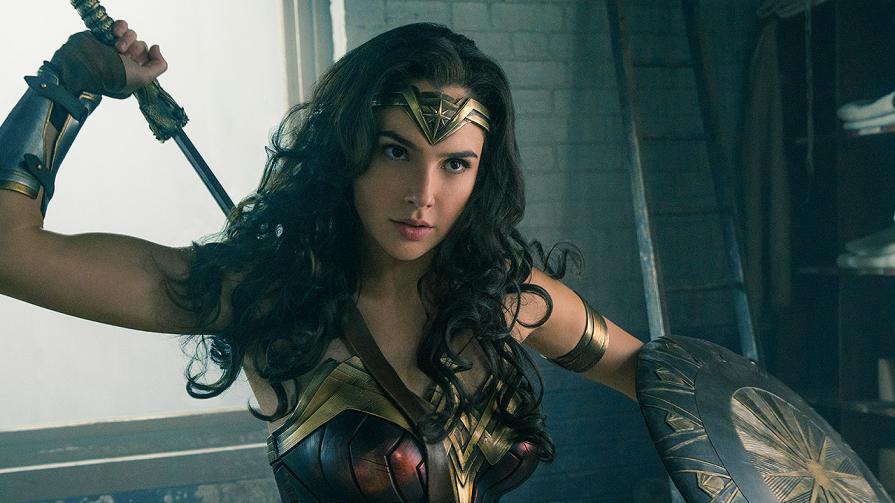

 It’s been years since I was what you’d consider very religious, but the ceremony of lighting Shabbat candles has stayed with me. It’s so important in fact that I chose to write a Larp about it for my contribution to the
It’s been years since I was what you’d consider very religious, but the ceremony of lighting Shabbat candles has stayed with me. It’s so important in fact that I chose to write a Larp about it for my contribution to the 



